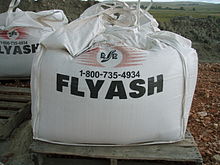Register now or log in to join your professional community.
discribe casing.?

Controlling formation pressures
Removing cuttings from the borehole
Cooling and lubricating the bit
Transmitting hydraulic energy to the bit and downhole tools

It avoid hydrocarbon from reservoir entering the well and goes to atmospheric pressure

another function : to keep hole stability. Mud is very important because mud gives us a lot of data of well bore

lubricate tools
help speed up drilling
clean the well
keep positive pressure for well control
It's the most important parameter when drilling because of the fact when it looses any of it's propreties (density, viscosity,...) you risk to have a kick or to get stuck, and also slow drilling and bad cleaning..

Controlling formation pressures
Removing cuttings from the borehole
Cooling and lubricating the bit
Transmitting hydraulic energy to the bit and downhole tools
It avoid hydrocarbon from reservoir entering the well and goes to atmospheric pressure
lubricate tools
help speed up drilling
clean the well
keep positive pressure for well control
It's the most important parameter when drilling because of the fact when it looses any of it's propreties (density, viscosity,...) you risk to have a kick or to get stuck, and also slow drilling and bad cleaning..
another function : to keep hole stability. Mud is very important because mud gives us a lot of data of well bore
measurement while drilling;swinging formation pressure;lubrication;stabilizes wellbore;cleaning hole;cooling bit

I consider that mud is the heart of drilling process. Mud have many functions such as control formation pressure to avoid kick, hole cleaning to avoid stuck of drilling tools, cooling and lubricity and hole stability.
Also, some types of mud make encapsulation of shale to avoid interact mud with shale or cuttings (e.g. PHPA mud).

measurement while drilling;swinging formation pressure;lubrication;stabilizes wellbore;cleaning hole;cooling bit

 Mud Pit
Mud Pit
Drilling fluid carries the rock excavated by the drill bit up to the surface. Its ability to do so depends on cutting size, shape, and density, and speed of fluid traveling up the well (annular velocity). These considerations are analogous to the ability of a stream to carry sediment; large sand grains in a slow-moving stream settle to the stream bed, while small sand grains in a fast-moving stream are carried along with the water. The mud viscosity is another important property, as cuttings will settle to the bottom of the well if the viscosity is too low.
 Fly Ash Absorbent for Fluids in Mud Pits
Fly Ash Absorbent for Fluids in Mud Pits
Other properties include:
Mud is, in varying degrees, toxic. It is also difficult and expensive to dispose of it in an environmentally friendly manner. A Vanity Fair article described the conditions at Lago Agrio, a large oil field in Ecuador where drillers were effectively unregulated.[citation needed]
Water based drilling fluid has very little toxicity, made from water, bentonite and barite, all clay from mining operations, usually found in Wyoming. There are specific chemicals that can be used in water based drilling fluids that alone can be corrosive and toxic, such as hydrochloric acid. However, when mixed into water based drilling fluids, hydrochloric acid only decreases the pH of the water to a more manageable level. Caustic (sodium hydroxide), anhydrous lime, soda ash, bentonite, barite and polymers are the most common chemicals used in water based drilling fluids. Oil Base Mud and synthetic drilling fluids can contain high levels of benzene, and other chemicals
Most common chemicals added to OBM Muds Barite Bentonite Diesel Water Emulsifiers

Indeed mud has many functions such as keep the stability at drill pipes and make a balance between bit pressure and different kind of informations . also to keep HWT ( heavy weight tools ) to be in cooling .
The main functions of drilling fluids include providing hydrostatic pressure to prevent formation fluids from entering into the well bore, keeping the drill bit cool and clean during drilling, carrying out drill cuttings, and suspending the drill cuttings while drilling is paused and when the drilling assembly is brought in and out of the hole. The drilling fluid used for a particular job is selected to avoid formation damage and to limit corrosion.



